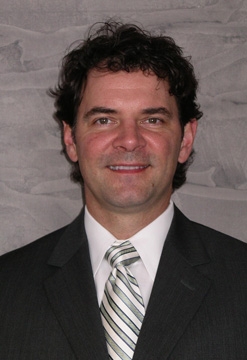The New Year is off to an eventful, if rocky, start. Here, four spine surgeons discuss where the opportunities lie for spine surgeons in 2015.
Ask Spine Surgeons is a weekly series of questions posed to spine surgeons around the country about clinical, business and policy issues affecting spine care. We invite all spine surgeon and specialist responses. Next week's question: What change do you hope to see in the spine industry in 2015?
Please send responses to Anuja Vaidya at avaidya@beckershealthcare.com by Wednesday, Jan. 28, at 5 p.m. CST.
Question: What are some of the biggest opportunities for spine surgeons in 2015?
Brian R. Gantwerker, MD, The Craniospinal Center of Los Angeles: I think we have the opportunity in 2015 to change the narrative. We can stop being pariahs and show through good outcomes and reproducible data that spine surgery is a legitimate treatment and that we, as providers, are entitled to remuneration. Our patients, most importantly, are entitled to competent and safe surgeons and treatments and to be covered by their plans.
 Richard Kube, MD, Prairie Spine & Pain Institute, Peoria, Ill.: An opportunity we are pursuing is the cash customer. There are several factors driving this opportunity. First, as insurance prices rise, so do the deductibles and hence, patients are becoming more price conscious. Secondly, there are a greater numbers of cases that are being rationed by insurers under the guise of "experimental procedures" or some treatment guideline that lacks any transparency. This leaves the patient unable to find treatment for his or her ailment.
Richard Kube, MD, Prairie Spine & Pain Institute, Peoria, Ill.: An opportunity we are pursuing is the cash customer. There are several factors driving this opportunity. First, as insurance prices rise, so do the deductibles and hence, patients are becoming more price conscious. Secondly, there are a greater numbers of cases that are being rationed by insurers under the guise of "experimental procedures" or some treatment guideline that lacks any transparency. This leaves the patient unable to find treatment for his or her ailment.
For those spine surgeons who have access to an ambulatory center and the ability to control the costs for all aspects of service, they can compete on value. Price points mixed with quality will provide the best option for folks in the position of large deductibles or the need to pay for the whole procedure out of pocket.
Christian G. Zimmerman, MD, MBA, Saint Alphonsus Medical Group, SAHS Neuroscience Institute: Complex spinal  surgery is an integral part of any tertiary hospital's service offering, and interdependent with prospective budget strategies and finance. Unfortunately, this has translated into an industry currently under massive scrutiny by insurer and health system alike. "Value reimbursement" currently drives surgical outcomes, demanding clinical and radiological substantiation as obligatory requisite prior to surgical intervention. Deviation from proposed surgical plans can result in payment withhold or delay.
surgery is an integral part of any tertiary hospital's service offering, and interdependent with prospective budget strategies and finance. Unfortunately, this has translated into an industry currently under massive scrutiny by insurer and health system alike. "Value reimbursement" currently drives surgical outcomes, demanding clinical and radiological substantiation as obligatory requisite prior to surgical intervention. Deviation from proposed surgical plans can result in payment withhold or delay.
Relationship building is time-tested and reliant on information resource and sharing. Approval rates for surgical scheduling are dependent upon affirmed quality measures and informational exchange.
Recent disclosure by CMS logisticians replete the advancing trends of fusion rates and the burgeoning number of adjacent levels seemingly define the practice of spinal surgery. Substantiation will obligate diagnosis, not the therapy being the focus of the surgical driver. Our opportunity will either be selfless in origin or punitive in prospect.
Cost containment is also welcomed and encouraged and should be top of mind for all surgeons.

The Medicare BPCI pilot program is slated to begin in 2015 with spine and total joints as high priorities. Inevitably, the commercial insurance companies will look to replicate what CMS does, including shared financial risk with spine surgeons. I believe the next 12 to 24 months will be great windows of opportunity for prepared, and well-represented, spine surgeons to move into this space.
For more articles on spine:
Backing good posture: The curious phenomenon of 'Text neck'
The CORE Institute adds Dr. Tammy Penhollow
5 key concepts on percutaneous laser disc decompression outcomes


